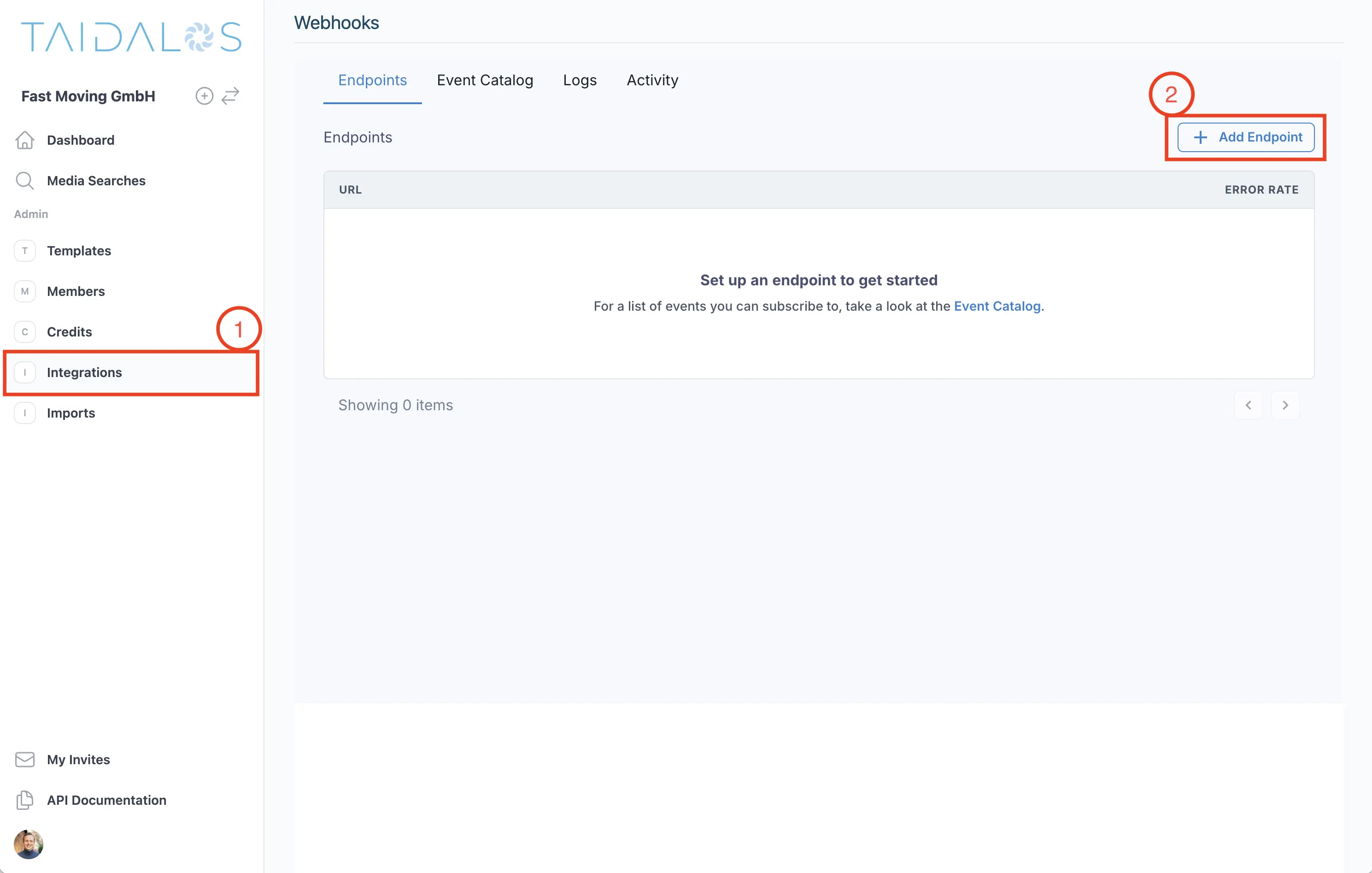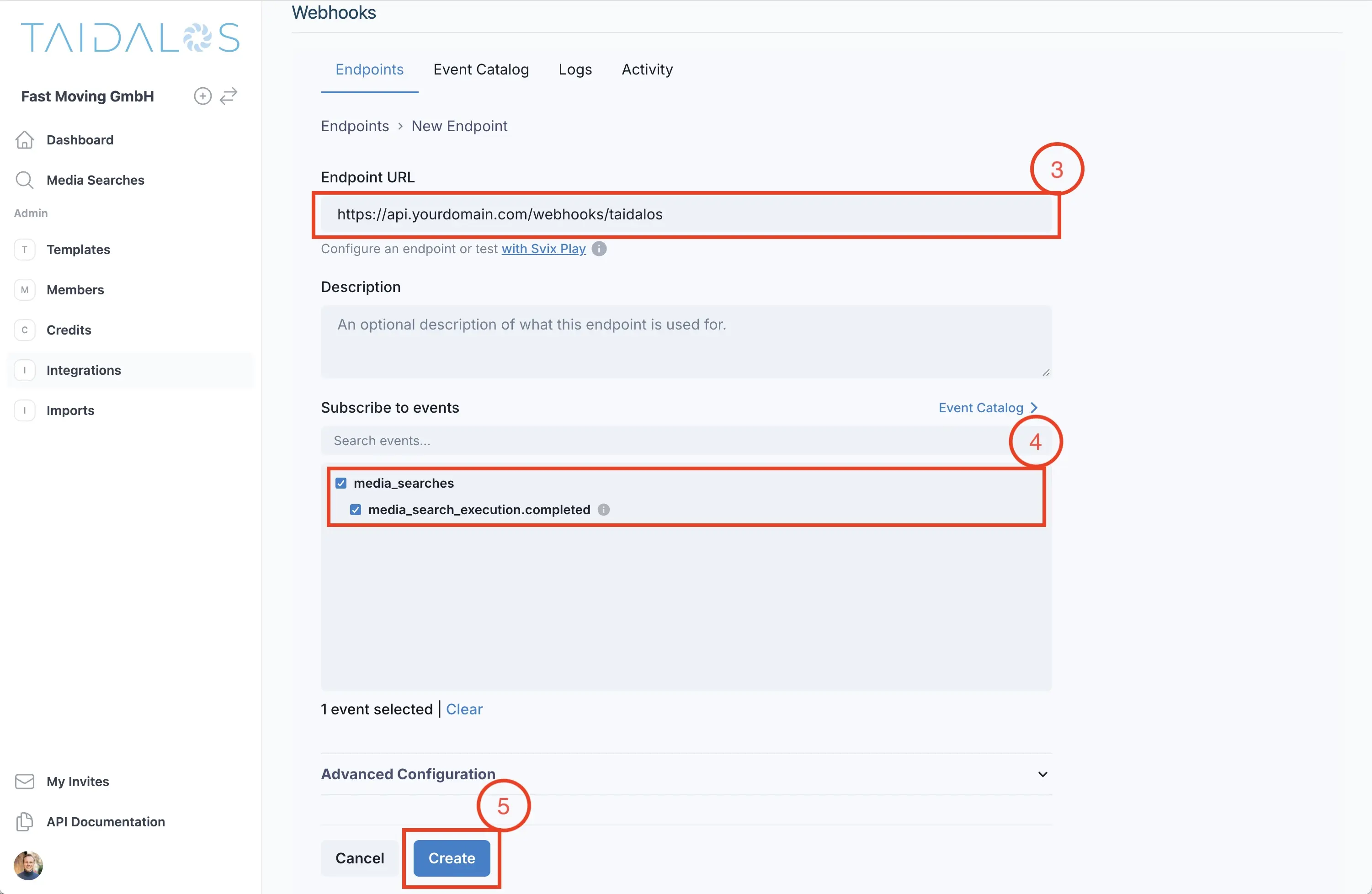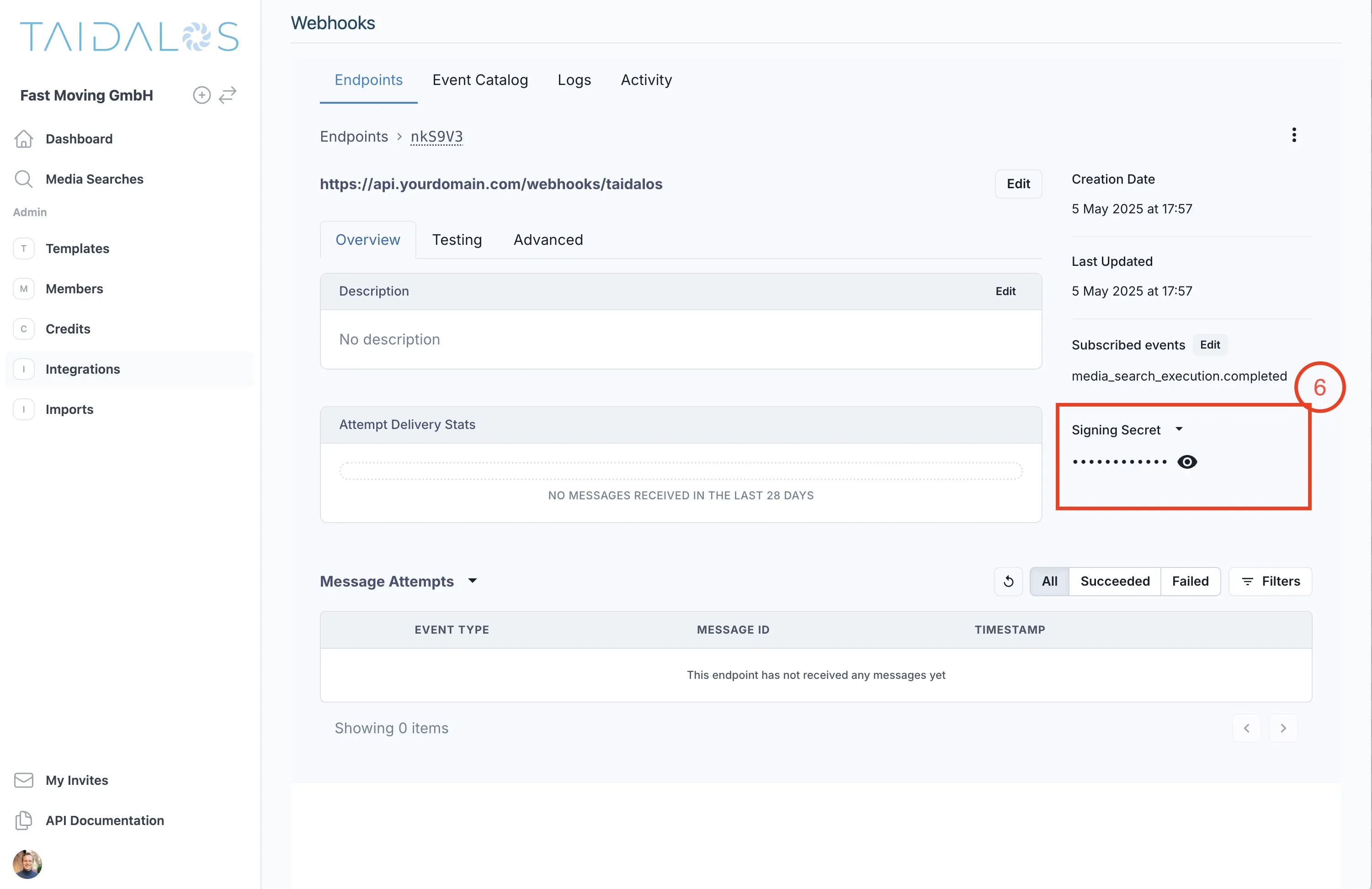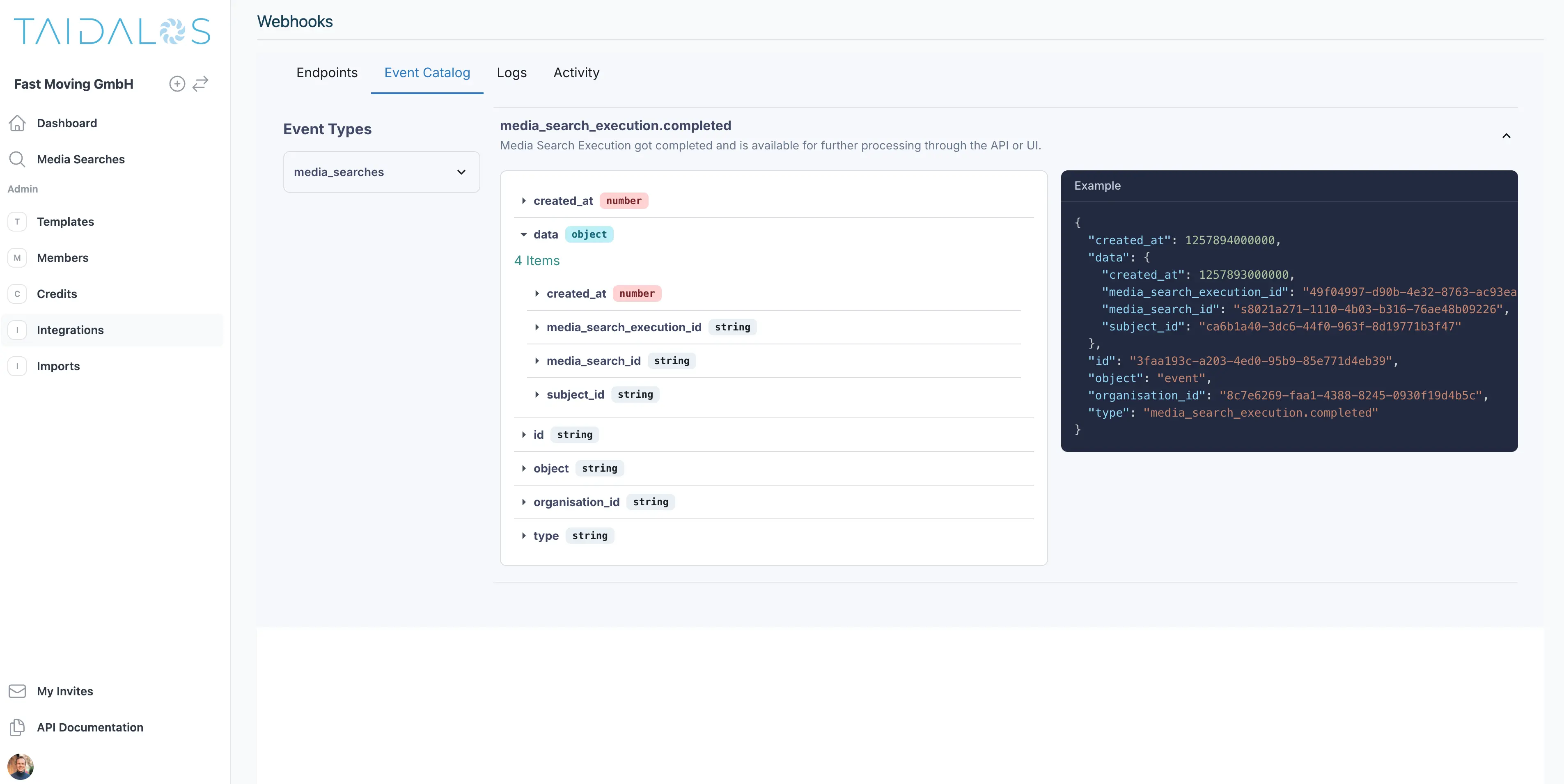Julius Möller
This guide provides a step-by-step tutorial on how to use the webhook
We need to process a lot of data before we can provide you with the full adverse media assessment. This can take a few moments. We also don’t like to keep you or your client waiting. That’s why we have designed our system to work asynchronously.
One way to receive the search results is by polling the API every x seconds
Warning: This works for prototyping and trying out the API. However, calling those endpoints in production can lead to rate limiting issues. That’s why we recommend using webhooks.
We use Svix to handle the webhooks for you and us. Their focus is solely on webhook security and how to make them easy to use and effective 24/7 (like we do with adverse media).
Webhooks are API calls to your server to inform you that a certain event has happened. The payload of an event contains information to take next steps (e.g., fetch data and save to a database, send an email, etc.).
On your server, set up a POST endpoint to receive webhook events. An example endpoint for your application could look
like: https://api.yourdomain.com/webhooks/taidalos.
Make sure that there is no authentication middleware before hitting the handler. Step 3 discusses how to secure your webhook.
Sign in to or create an account if you have not already (no credit card required).
Next, go to Integrations and create a new webhook referencing the endpoint you have created in step 1 and subscribe to
the events you are interested in.


First, get the secret from the webhook settings.

Then you can verify the payload using the secret.
You can find more details for this and other events in the Event Catalog#

How you parse and process the data depends on your server language.
This is an example of how to verify the request using Python and FastAPI.
Other examples including JavaScript, Rust, Go, Java, Kotlin, Ruby, C#, PHP, cURL can be found here: https://docs.svix.com/receiving/verifying-payloads/how
from fastapi import Request, Response, status
from svix.webhooks import Webhook, WebhookVerificationError
secret = "whsec_MfKQ9r8GKYqrTwjUPD8ILPZIo2LaLaSw"
@router.post("/webhook/", status_code=status.HTTP_204_NO_CONTENT)
async def webhook_handler(request: Request, response: Response):
headers = request.headers
payload = await request.body()
try:
wh = Webhook(secret)
msg = wh.verify(payload, headers)
except WebhookVerificationError as e:
response.status_code = status.HTTP_400_BAD_REQUEST
return
# Do something with the message...
This is the event payload for the media_search_execution.completed event
{
"created_at": 1257894000000,
"data": {
"created_at": 1257893000000,
"media_search_execution_id": "49f04997-d90b-4e32-8763-ac93ea1eb956",
"media_search_id": "s8021a271-1110-4b03-b316-76ae48b09226",
"subject_id": "ca6b1a40-3dc6-44f0-963f-8d19771b3f47"
},
"id": "3faa193c-a203-4ed0-95b9-85e771d4eb39",
"object": "event",
"organisation_id": "8c7e6269-faa1-4388-8245-0930f19d4b5c",
"type": "media_search_execution.completed"
}
You can now be sure that the media_search_execution has been completed. This means that calling
GET https://api.taidalos.com/v1/media-searches/aggregate/{media_search_execution_id}
GET https://api.taidalos.com/v1/media-searches/execution/{media_search_id}
You can then process the results and save them to your database.
Any questions or feedback? Please reach out to me at [email protected].